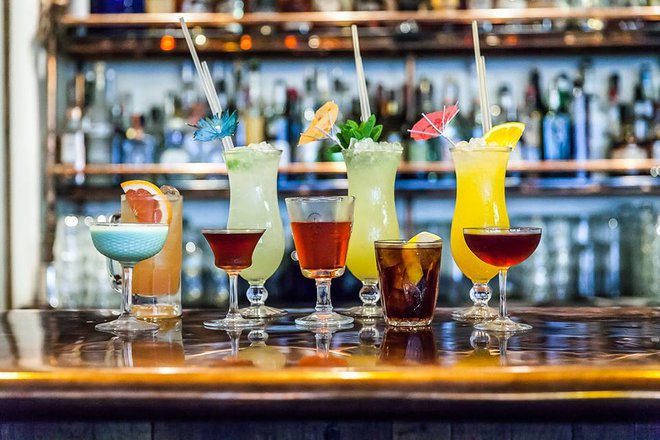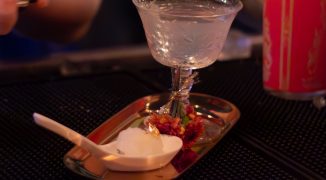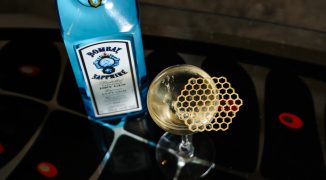Sex On The Beach. Grasshopper. White Russian. Hurricane. Long Island Iced Tea. For many people, mention of these drinks conjures up memories of 21st birthdays or underage debauchery. But at some craft bars, they’re getting the VIP treatment with full-on makeovers and prime spots on the menu.
Prohibition and pre-Prohibition cocktails are unquestionably still dominant within the craft bar scene. But with Old Fashioneds and Manhattans on almost every menu, bartenders are looking elsewhere for inspiration. Some are even reviving drinks popular during the late 1960s to the late ‘90s, a period many refer to as “the dark age of cocktails.”
The prescribed treatment is somewhat standardized: traditionally premixed, shelf-stable ingredients like sour mix are replaced with fresh juices and housemade syrups. Well liquors are replaced by premium spirits. Bitters or amari are added for depth, or to round out something that was “missing,” says Juyoung Kang, lead mixologist at Delmonico Steak House in Las Vegas. Most importantly, every cocktail is shaken or built using proper technique.
Ian McIntyre, general manager of the New Orleans-themed Shoreditch cocktail bar NOLA London, think that, if made well, cocktails like the Hurricane or the Grasshopper should share the same status as drinks like the Sazerac or the Ramos Gin Fizz. “They have history too,” he says. “There’s been a lot of stigma behind these drinks for a while now, and I believe it [was] thanks to their popularity. Bars were having to keep up with demand and found shortcuts.”
Nostalgia also plays a big role in reviving these drinks’ reputations. “A lot of us are children of the ‘80s and ‘90s and our parents drank those drinks,” says Charlie Moore, lead bartender at Dallas’s Knife. “Those were the first drinks that we learned as budding or future bartenders, and we paid attention to things like that.”
They’re also fun to rebalance menus, but they can present some unique challenges, says Kang. “It’s one of those places where we can be as creative as possible, but it’s not relatable to some people,” she says. “It might be seen as [though] we’re resurrecting the drinks that people would want to lay to rest or [that] we’re making them better. I’m really hoping we’re re-introducing them to the older generation to break [them] away from their ‘usual’ and try something new.”
Oftentimes, the biggest challenge is the guest’s expectations. Knife, which is modeled as a modern take on a traditional steakhouse, features a reinvented Long Island Iced Tea (using fresh juice, 86 Co. spirits, proper “classic” shaking technique, and sugar cane Mexican Coke instead of Coke from a soda gun) and several other drinks from the ’70s and ’80s. Moore has found that the gap between what the customer is expecting and what they’re served can be disconcerting. “It’s also a little bit more of a challenge trying to find things that we can tweak.”
“You are always going to see a resurgence of drinks from different eras and people’s variations on great classics,” says McIntyre. “I think a lot of people, especially the older generation of bartenders, are starting to take themselves less seriously and like to have more fun with their drink creations, taking cheesy classics from the ’80s and making them more interesting. Most of the time they are still cheesy, but definitely tastier.”




